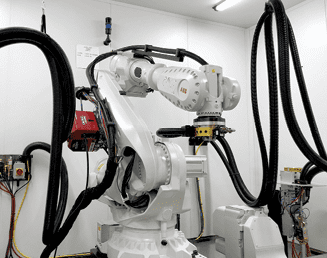Credit: www.aerospacemanufacturinganddesign.com
The Office of Naval Research and Lockheed Martin are exploring ways to apply artificial intelligence to train robots to oversee and optimize 3D printing of complex parts.
The two-year, $5.8 million contract will allow the team to develop software models and sensor modifications to customize multi-axis, laser deposition robots to build better components.
“We will research ways machines can observe, learn, and make decisions by themselves to make better parts that are more consistent, which is crucial as 3D-printed parts become more common,” says Brian Griffith, Lockheed Martin’s project manager. “Machines should monitor and make adjustments on their own during printing to ensure that they create the right material properties during production.”
Researchers will apply machine learning techniques to additive manufacturing (AM), so the robot can monitor and control variables during fabrication, machines to optimize structures based on previouslyverified analysis.
The research team will vet different internal microstructures in additive builds, measuring machine performance to align microstructures with material properties. With this information, machines will make decisions to print a part that ensures good performance.
The team is starting with titanium alloy Ti-6AI-4V and integrating related research with seven industry, national lab, and university partners.
“When you can trust a robotic system to make a quality part, that opens the door to who can build usable parts and where you build them,” says Zach Loftus, Lockheed Martin Fellow for additive manufacturing.


